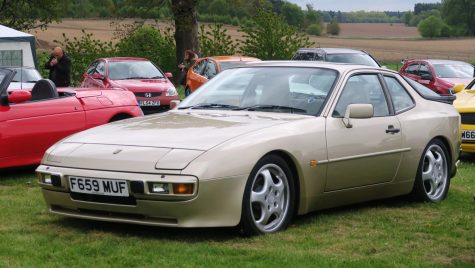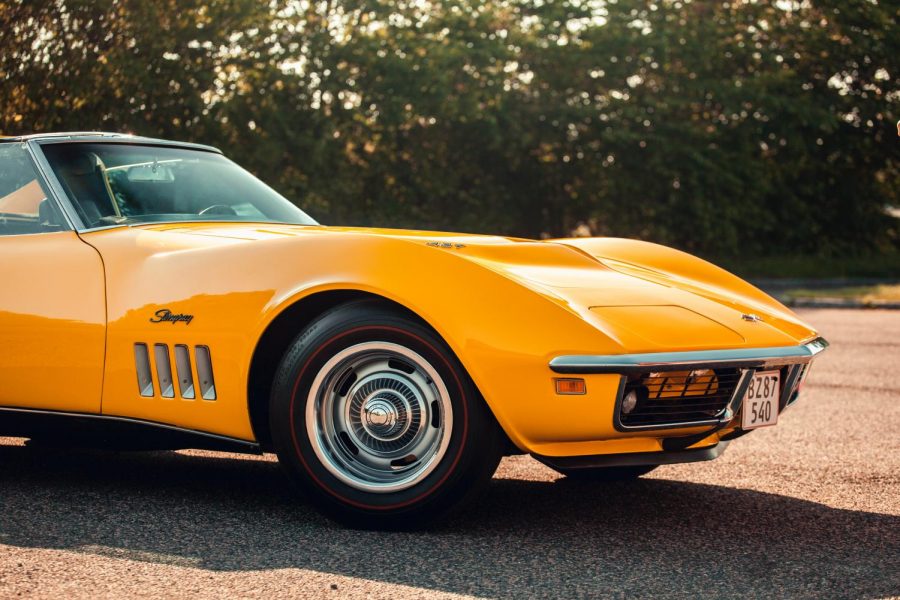Finding Mechanical Solace in Classic Cars
An exploration of the history behind classic cars
The C3 Corvette was one of the defining cars of the 1960s and 70s.
Wake up. Log in. Join Zoom class. Complete homework. Sleep. Repeat.
For over a year, this is the cycle that I, and many other students worldwide, have grown accustomed to. During the Coronavirus pandemic, our reliance on the digital world is increasingly prevalent. We spend hours in front of computer screens, locked in a virtual world and separated from anything real. However, in this online age, I was able to disconnect and explore the world of classic cars.
Throughout the pandemic, I have had the amazing opportunity to work on multiple classic cars. Created in a time devoid of modern computing, these vehicles are incredible analog machines. During the 1960s, ’70s, and early ’80s, cars were created with nothing more than pens, pencils, slides, and drafting boards. Designers, unencumbered by restraints such as crash testing, fuel efficiency quotas, and other driver/safety regulations, created shapes that defined each decade. Unlike the mundane, boxy SUVs of today, manufacturers had the creative freedom to form elegant and timeless designs.
One of the first vehicles that I worked on was a 1970 C3 Corvette. Produced by Chevrolet from 1968 to 1982, it featured a long nose, a low profile, a short rear end, and swooping curves. This early-year 1970 model was painted a beautiful bronze and sported large chrome metal bumpers, an option that quickly disappeared following new pedestrian and crash safety regulations. Stepping inside, the door closed with a reassuring clunk as you are transported back in time. There were no screens, complex electronics, safety systems, or even air conditioning. In fact, if you wanted to listen to music, you needed to remember to screw on the antenna before driving. As you turn the key, the analog gauges flicker and the engine roars to life, shaking the entire vehicle. It is just you and the car — no filter.
Like most classic cars, the Corvette is also extremely easy to work on. Despite using 50 year-old technology, it provided me with a strong foundation to learn about ignition systems, fuel systems, electrical systems, transmissions, engines, and brakes. One day I would find myself changing out spark plugs, and the next day, I would find myself cleaning the fuel system.
Yet, these vehicles are more than just cars. Every make and model is its own time capsule into the past.
Another car that I worked on was a 1983 Porsche 944. While it does not have the heritage and profile of a Porsche 911, the 944 is quickly becoming a cult classic among enthusiasts. In fact, it was the first car on which I learned how to drive stick shift. Although cars in the 1980s began to utilize onboard computers, this 944 remains a relatively analog machine.

However, the most intriguing aspect of the 944 was its history. Built in 1982, it debuted alongside Michael Jackson’s album Thriller and Stephen Spielberg’s movie E.T. the Extra-Terrestrial. Notably, under the hood, a small metal stamp reads, “Manufactured in West Germany.” In its own way, the 944 serves as a historical reminder of the Cold War. During this time, the Berlin Wall still stood strong, the U.S. and U.S.S.R. feuded over nuclear weapons, and the Falklands War had just begun.
Classic cars offer a window into the past, both technologically and historically. As time goes on, many of these vehicles will no longer be on the road. Instead, they will be stored away in museums or personal collections, especially as the electric vehicle market continues to grow. While our digital future is full of exciting new technologies, it is important to appreciate and to understand the history behind these vehicles. They will only be around for so long before they quietly disappear into the dark.
Classic cars offer a window into the past, both technologically and historically.
Alex Tembelis is a News Editor for ‘The Science Survey.' He believes that journalistic writing has a responsibility to inform the public about world...

